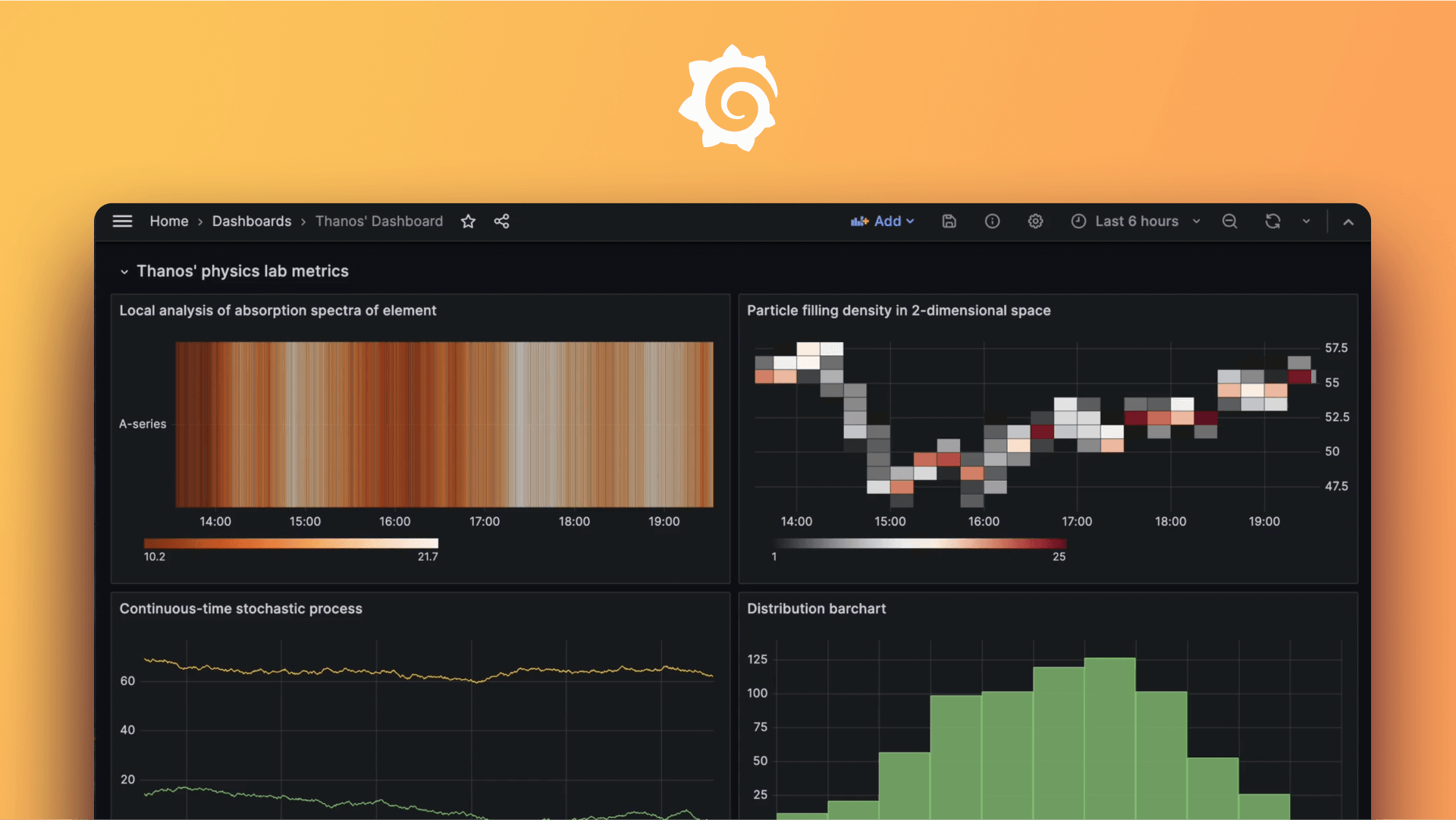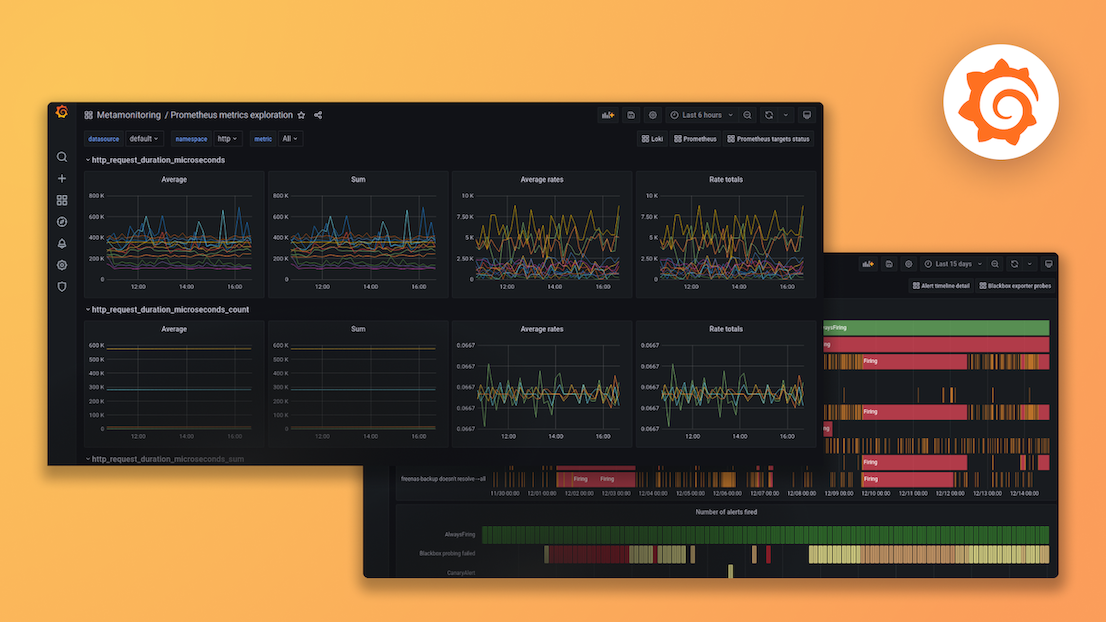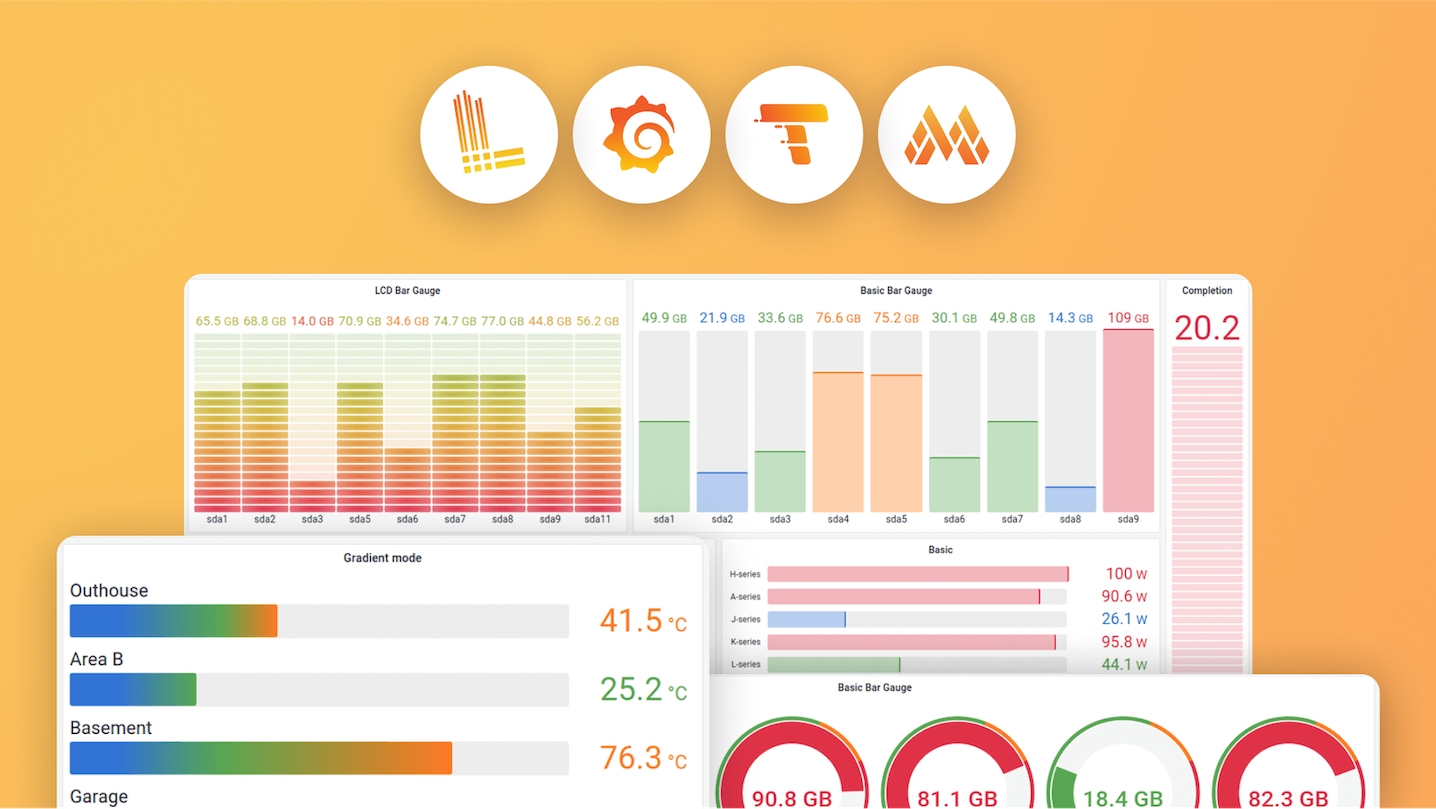Plugins 〉Prometheus AlertManager Datasource
Prometheus AlertManager Datasource
Grafana datasource for Prometheus Alertmanager
This datasource lets you use the Alertmanager's API of Prometheus to create dashboards in Grafana.

Usage
Query Editor
The following options are available:
Receiver
Only retrieve alerts that match the defined receiver. If left empty, all receivers will be matched.
Filters
Into the query expression field, you can set filters.
Examples:
alertname="HostDown"will only display alerts which has the label alertname equals to "HostDown".severity="1"will only display alerts which has the label severity equals to "1".
You can also set multiple filters like alertname="DiskFull",df="opt".
Active
Whether the alerts gathered should be active.
Silenced
Whether the alerts gathered should be silenced.
Inhibited
Whether the alerts gathered should be inhibited.

Panels
Stat
To use stat panels, you must apply a transformation to your metrics:
- Edit your panel and open the "Transform" tab.

- Select "Reduce" and change the "Calculations" to "Count"

Development Setup
Usage of Yarn is encouraged to build.
$ yarn install
$ yarn run build
Grafana Cloud Free
- Free tier: Limited to 3 users
- Paid plans: $55 / user / month above included usage
- Access to all Enterprise Plugins
- Fully managed service (not available to self-manage)
Self-hosted Grafana Enterprise
- Access to all Enterprise plugins
- All Grafana Enterprise features
- Self-manage on your own infrastructure
Grafana Cloud Free
- Free tier: Limited to 3 users
- Paid plans: $55 / user / month above included usage
- Access to all Enterprise Plugins
- Fully managed service (not available to self-manage)
Self-hosted Grafana Enterprise
- Access to all Enterprise plugins
- All Grafana Enterprise features
- Self-manage on your own infrastructure
Grafana Cloud Free
- Free tier: Limited to 3 users
- Paid plans: $55 / user / month above included usage
- Access to all Enterprise Plugins
- Fully managed service (not available to self-manage)
Self-hosted Grafana Enterprise
- Access to all Enterprise plugins
- All Grafana Enterprise features
- Self-manage on your own infrastructure
Grafana Cloud Free
- Free tier: Limited to 3 users
- Paid plans: $55 / user / month above included usage
- Access to all Enterprise Plugins
- Fully managed service (not available to self-manage)
Self-hosted Grafana Enterprise
- Access to all Enterprise plugins
- All Grafana Enterprise features
- Self-manage on your own infrastructure
Grafana Cloud Free
- Free tier: Limited to 3 users
- Paid plans: $55 / user / month above included usage
- Access to all Enterprise Plugins
- Fully managed service (not available to self-manage)
Self-hosted Grafana Enterprise
- Access to all Enterprise plugins
- All Grafana Enterprise features
- Self-manage on your own infrastructure
Installing Prometheus AlertManager Datasource on Grafana Cloud:
Installing plugins on a Grafana Cloud instance is a one-click install; same with updates. Cool, right?
Note that it could take up to 1 minute to see the plugin show up in your Grafana.
Installing plugins on a Grafana Cloud instance is a one-click install; same with updates. Cool, right?
Note that it could take up to 1 minute to see the plugin show up in your Grafana.
Installing plugins on a Grafana Cloud instance is a one-click install; same with updates. Cool, right?
Note that it could take up to 1 minute to see the plugin show up in your Grafana.
Installing plugins on a Grafana Cloud instance is a one-click install; same with updates. Cool, right?
Note that it could take up to 1 minute to see the plugin show up in your Grafana.
Installing plugins on a Grafana Cloud instance is a one-click install; same with updates. Cool, right?
Note that it could take up to 1 minute to see the plugin show up in your Grafana.
Installing plugins on a Grafana Cloud instance is a one-click install; same with updates. Cool, right?
Note that it could take up to 1 minute to see the plugin show up in your Grafana.
Installing plugins on a Grafana Cloud instance is a one-click install; same with updates. Cool, right?
Note that it could take up to 1 minute to see the plugin show up in your Grafana.
For more information, visit the docs on plugin installation.
Installing on a local Grafana:
For local instances, plugins are installed and updated via a simple CLI command. Plugins are not updated automatically, however you will be notified when updates are available right within your Grafana.
1. Install the Data Source
Use the grafana-cli tool to install Prometheus AlertManager Datasource from the commandline:
grafana-cli plugins install The plugin will be installed into your grafana plugins directory; the default is /var/lib/grafana/plugins. More information on the cli tool.
Alternatively, you can manually download the .zip file for your architecture below and unpack it into your grafana plugins directory.
Alternatively, you can manually download the .zip file and unpack it into your grafana plugins directory.
2. Configure the Data Source
Accessed from the Grafana main menu, newly installed data sources can be added immediately within the Data Sources section.
Next, click the Add data source button in the upper right. The data source will be available for selection in the Type select box.
To see a list of installed data sources, click the Plugins item in the main menu. Both core data sources and installed data sources will appear.
Changelog
All notable changes to this project will be documented in this file.
The format is based on Keep a Changelog, and this project adheres to Semantic Versioning.
2.0.1 (2024-07-25)
Bug Fixes
- update dependencies to fix CVEs (1694ee8)
Miscellaneous Changes
- migrate from grafana/e2e to grafana/plugin-e2e (1bc1dc7)
2.0.0 (2023-11-06)
⚠ BREAKING CHANGES
- rewrite plugin using React plugin framework (#149)
Features
1.2.1 (2022-06-07)
Bug Fixes
- Object(...) is not a function error (da97b6f)
Miscellaneous Changes
- set required grafana version to >= 7.5.0 (8830627)
1.2.0 (2022-05-17)
Features
Bug Fixes
Miscellaneous Changes
- update .gitignore with vscode and build directories (d350bb1)
- upgrade grafana dependencies to v8.5.2 (2df0340)
- upgrade lodash to v4.17.21 (913bb00)
- upgrade tslib to v2.4.0 (913bb00)
1.1.0 (2022-05-05)
Features
- add alertstatus and alertstatus_code fields to data frame (#101)
- add doc to configure singlestat panel (8c51289)
- add github actions for build process (29a7494)
- display active alerts by default (da31418)
- update tslib dependency (b420606)
Bug Fixes
- regex escape in filters (ad8ba67)
- revert to original plugin id (#101)
- packaging linting errors raised by Grafana plugins check webapp (#96)
- build workflow (b4d72a7)
- ci: remove package-lock.json (db32e71)
- doc: add missing images (a26d316)
1.0.0 (Feb 12, 2021)
IMPROVEMENTS
- Rewrite plugin to match latest dev standards (Typescript, Yarn)
- Add support of latest Grafana versions
0.0.8 (Apr 22, 2020)
IMPROVEMENTS
- Add support of variable templating (#55)
BUGFIX
- Fix datasource request (#73)
0.0.7 (Jan 25, 2019)
IMPROVEMENTS
BUGFIX
- Fix blank severity column (#31)
0.0.6 (May 22, 2018)
IMPROVEMENTS
- Use Apache License 2.0
- Fix severity labels struct (#26)
0.0.5 (May 23, 2018)
IMPROVEMENTS
- Display annotations and labels in separate columns
- Add a selector in query editor to choose the columns to display
0.0.4 (March 29, 2018)
IMPROVEMENTS
- Allow manual definition of severity levels
- Fix templating and add support of All and Multi variables
0.0.3 (December 01, 2017)
IMPROVEMENTS
- Add templating support
0.0.2 (December 01, 2017)
IMPROVEMENTS
- Add support annotations





